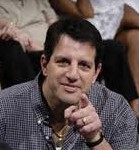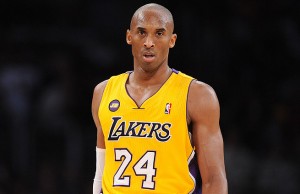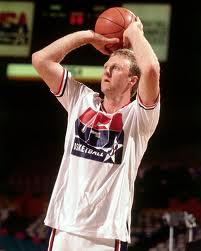 I started on this mission to dig into One and Done with two main goals in mind. The first was to shed light on the issues in a fact-based way, free from rhetoric and bias. For years the entire policy has been discussed in a way that obscures the facts, not clarifies them. The second is to have the policy viewed as more than an argument over what age to draw the line restricting players from entering the league.
I started on this mission to dig into One and Done with two main goals in mind. The first was to shed light on the issues in a fact-based way, free from rhetoric and bias. For years the entire policy has been discussed in a way that obscures the facts, not clarifies them. The second is to have the policy viewed as more than an argument over what age to draw the line restricting players from entering the league.
While I have focused on the major need of each of the sides in Part One, and the data in Part Two, I want to take a moment to discuss a few other issues that demonstrate how the solution needs to be more comprehensive than just picking an age limit.
 From the players’ standpoint, they want to be able to maximize their career earnings. Careers are short and it’s virtually impossible to earn NBA money anywhere else. But on the other hand, opportunities are precious and players can’t afford to make a mistake by coming out too early and falling out of favor. With family, advisors, scouts, and agents chirping in the ears of 18-year-old kids, it’s incredibly difficult for them to know what to do. Under the current system a wrong choice can be devastating for a player who loses his college eligibility.
From the players’ standpoint, they want to be able to maximize their career earnings. Careers are short and it’s virtually impossible to earn NBA money anywhere else. But on the other hand, opportunities are precious and players can’t afford to make a mistake by coming out too early and falling out of favor. With family, advisors, scouts, and agents chirping in the ears of 18-year-old kids, it’s incredibly difficult for them to know what to do. Under the current system a wrong choice can be devastating for a player who loses his college eligibility.
While the NCAA wants players to stay in school, they also don’t want major compliance problems from kids who are not college material with families to support. They tend to go outside the system taking money from unscrupulous sources so they can have a car, decent clothes and a winter coat.
The league wants to minimize risk in the draft but teams still want access to the top talent. One LeBron or Kobe can change a team’s fortunes for 20 years. I’m pretty sure that Dan Gilbert was happy that he was able to draft LeBron out of high school.
The more you understand the issues, the easier it is to see why the current one and done system can’t work. It doesn’t meet anyone’s needs.
So here is my magic formula that will create balance and fairness into the system.
Issue #1 Players maximizing earnings while minimizing the breakage from entering the draft too early
The current financial structure must change. The path to money is too one directional, and it’s about to get much more so. Currently it’s NBA salaries (millions) versus NCAA opportunities ($0). College players must be able to earn money to create a viable alternative to jumping prematurely to the NBA. For years, Olympic athletes supported themselves through sponsorships, appearances and other branding initiatives and were able to maintain their amateur status. This year, even a 13 year old Little League pitcher earned money doing national commercials and was ruled an amateur.
College players should be able to earn money through their own personal branding without violating their amateur status. They can earn money through selling memorabilia, making personal appearances, merchandise licensing, and other ways that do not constitute “pay to play” salary. It can all be above board and will not cost the NCAA a dime. It will actually create a new revenue stream that the NCAA can participate in.
Many players have local and national appeal on a level that will allow them to earn real money. It will go a long way to providing a financial alternative to the NBA allowing them to stay in school longer.
Issue #2 Drafting reliably while reducing the number of failing players.
 The data clearly show that while teams are able to identify top talent successfully at an early age, it is also clear that most players who are not chosen early in the draft struggle or fail to have successful careers. The first group typically thrives in the league while the second group would most likely benefit the most from further development in college.
The data clearly show that while teams are able to identify top talent successfully at an early age, it is also clear that most players who are not chosen early in the draft struggle or fail to have successful careers. The first group typically thrives in the league while the second group would most likely benefit the most from further development in college.
I would propose a modified age restriction system. High school players and freshmen would be eligible to enter the league only if they are picked in the first round. After two years out of high school, all players would be draft eligible.
The current baseball system allows players to be drafted in high school and either enter the pros or choose to go to college. My system would provide a window for the top stars to be picked for the draft either in high school or as freshmen. The pro teams would have the ability to pick players early, but the player would not have the total freedom to enter the draft until after 2 years of college, or an alternative (D-League, for example).
In the final three years prior to implementation of One and Done (2003-05), of the 26 high school players who entered the draft, only 15 were 1st round picks. Eleven freshmen entered the draft, and seven of those were 1st round picks. That means that 11 additional high school players would have gone to at least one year of college with 4 freshmen staying for a second year of college.
In the past three years (2012-14), 30 freshmen entered the draft with 23 being 1st round picks. That means that if my system was in place, 7 of those players would have gone to college or the D-League for their second year.
If these players had the ability to earn money, there is a high chance that many more players in all classes would stay in college longer. As I am only addressing the One and Done rule, I am not focusing on older college players here.
 One major change would need to be made for this to work. Undrafted players and players drafted who do not enter the NBA must be able to maintain their college eligibility. Players would no longer declare for the draft and by doing so jeopardize their amateur status. This rule is arbitrary anyway. Under the old system, Larry Bird was drafted by the Celtics as a junior. He finished his senior year at Indiana State and the Celtics retained his rights until the next draft. He signed with them before the 1979 draft.
One major change would need to be made for this to work. Undrafted players and players drafted who do not enter the NBA must be able to maintain their college eligibility. Players would no longer declare for the draft and by doing so jeopardize their amateur status. This rule is arbitrary anyway. Under the old system, Larry Bird was drafted by the Celtics as a junior. He finished his senior year at Indiana State and the Celtics retained his rights until the next draft. He signed with them before the 1979 draft.
Plus this type of age restriction only passes the fairness test if players can earn money in college. For players looking to enter the NBA as soon as possible and not looking for a college degree, the value of a scholarship is basically room and board.
No system is perfect, as drafting players is a very inexact science. I see this as a very viable middle ground that fills many more needs than the current system.
What has to happen to make this compromise work?
The league would be opening a limited window for high school players to enter, but will maintain control. They will be gaining access to more draftable players. They’d be giving up a blanket age limitation.
The players will be gaining a window for high school players and gaining the ability for college players to earn large amounts of money while in college. They will give up the ability for all 18 year olds to enter the draft and will be adopting that as a policy like they did with the max salary.
The NCAA will be allowing players to earn money in college and simplifying the eligibility rules around the draft. They will be gaining additional star players through the draft restrictions and will gain others through their ability to earn money while in college.
Each of the parties gain through this type of balanced program. This is clearly just a framework with many of the details to be filled in. There are additional ideas also that could be included, like a shorter rookie scale for juniors and seniors to encourage players to stay in school longer.
The point is for the parties to look at this issue as a win/win/win possibility. The other alternative is for one side to stick at 18 and the other side to stick at 20. The winner will be decided by one side capitulating; or agreeing by getting something as a tradeoff. Even if something like this concept is negotiated, it will take including the NCAA and for all parties to make some serious movement off established positions.
The joy of compromise!
(RELATED: ONE AND DONE: A DATA-DRIVEN ANALYSIS: PART ONE: THE LANDSCAPE)
(RELATED: ONE AND DONE: A DATA-DRIVEN ANALYSIS: PART TWO: THE RESULTS)
Danny Schayes is a Director of Business Optimization at Intensity and a leader in the business of professional sports. Schayes frequently advises sports organizations in complex business matters that include contract negotiations, pricing strategy, marketing optimization, and executive leadership. Follow him on Twitter.